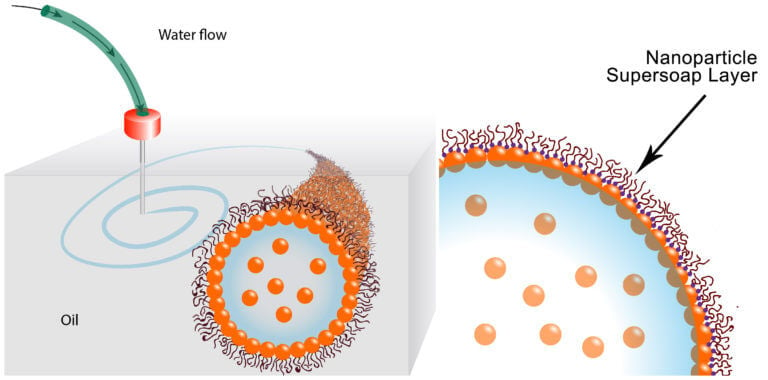
Is it possible to print water? Seemingly stupid question: of course not, because at first glance none of the three aggregate States of water unfit to print, and what’s the use? However, scientists from the National laboratory behalf of the Lawrence Berkeley not only found a way to implement at first glance a crazy idea, but and are threatening to make with the help of his invention the present revolution in electronics, pharmaceuticals and medicine.
Responsible for the development of a group of researchers led by Tom Russell, and at the moment they were able to print water strands with a diameter of 10 micrometers to 1 millimeter and a length of several meters. Print technology is based on maintaining a stable form of a suspension of water molecules in mineral oil. This structure, among other things, has the ability to deformation and shape memory.
“We have created a brand new class of materials. For their production we used a base of mineral oil with the addition of hydrophobic polymer molecules, as well as “ink” of water with the addition of hydrophilic particles of gold. The polymer molecules are connected to gold, forming a “needle”, one of which is hydrophobic and the second hydrophilic”.
Thus, the resulting structure has properties of a surfactant. On the border of oil and water, they form a structure, one part of which “loves” water and the other oil. This enables the creation of oil inside the threads from the water.

Diagram of the 3D printing technology with water-in-oil: when filling the water gold particles surround her and form a layer of elastic film on the interface of phases
For the very same print was modified a standard 3D printer in his design added a syringe with a very thin needle, through which water is supplied. At the desired pressure jet of water forms a thin tube into the layer of oil. The resulting thread has a good electrical conductivity that can be applied when creating electronic circuits, including those in flexible electronics. Such devices may be useful in the creation of medical gadgets, resistant to tension and compression (e.g., for attachment to the skin or the flexor surface).

Scientists have found a way of 3D printing with water
Vladimir Kuznetsov